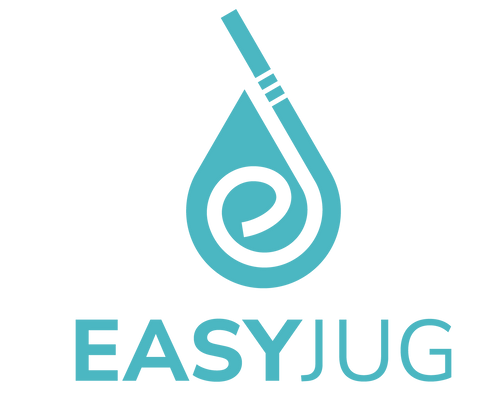Bringing a new life into this world is an awe-inspiring journey, filled with anticipation, excitement, and sometimes, uncertainty. At EasyJug, we understand the significance of this momentous occasion and the importance of empowering mothers with knowledge to make informed decisions about their birthing experience. In this guide, we delve into the various types of childbirth, providing insights, tips, and support for expectant mothers embarking on this incredible journey.
Understanding the Different Types of Childbirth
-
Vaginal Birth: Also known as vaginal delivery, this is the most common method of childbirth where the baby is born through the birth canal. Employs a variety of techniques such as breathing exercises, laboring in different positions, and utilizing pain relief methods like the Lamaze method to manage discomfort.
- Understanding the Process:
- Familiarize yourself with the stages of labor, from the onset of uterine contractions to the delivery of your baby's head and the subsequent delivery of the placenta.
- Recognize the signs of active labor, including regular contractions and the gradual dilation of the cervix, signaling that your body is preparing for childbirth.
- Embracing Natural Childbirth:
- Consider incorporating breathing techniques and relaxation methods into your birth preparation, such as those advocated by the Bradley Method.
- Explore different positions for labor and delivery, allowing you to find the most comfortable and effective posture to facilitate the birth process.
- Nurturing Your Body:
- Stay hydrated and maintain a balanced diet to support your overall health and energy levels throughout pregnancy and labor.
- Engage in gentle exercises and prenatal yoga to promote flexibility, strength, and optimal fetal positioning for a smoother birth.
- Communicating with Your Healthcare Provider:
- Share your medical history and any concerns or preferences regarding your birth plan with your healthcare provider.
- Discuss the possibility of medical interventions, such as vacuum extraction or forceps delivery, in the event of complications during labor.
- Creating a Supportive Environment:
- Surround yourself with a supportive network of family members, friends, and healthcare professionals who can offer encouragement and assistance during labor.
- Consider the option of a birthing center or home birth if it aligns with your preferences and medical condition, providing a more personalized and intimate setting for childbirth.

- Water Birth: A natural birthing option where the mother delivers her baby in a specially designed tub of warm water. Offers buoyancy and relaxation, often promoting a more comfortable and intimate birthing experience.
- Understanding the Process:
- Water birth involves laboring and giving birth in a specially designed tub of warm water, offering buoyancy and relaxation during childbirth.
- Educate yourself about the benefits and potential risks of water birth, ensuring that you make an informed decision that aligns with your preferences and medical history.
- Communicating with Your Healthcare Provider:
- Discuss your desire for a water birth with your healthcare provider to ensure that it is a safe and viable option for you and your baby.
- Collaborate with your healthcare team to develop a comprehensive birth plan that addresses medical considerations, such as monitoring fetal heart rate and managing any potential complications.
- Creating a Supportive Environment:
- Choose a reputable birth center or healthcare facility that offers water birth as an option, providing a nurturing and supportive environment for your childbirth experience.
- Consider enlisting the support of a certified midwife or doula who has experience with water births, offering guidance, advocacy, and emotional support throughout labor and delivery.
- When water births are performed at home, get guidance from a midwife or doula on how to set up your home for water birth.
- Preparing Your Mind and Body:
- Practice relaxation techniques and mindfulness exercises to cultivate a sense of calm and tranquility, allowing you to enter labor with a focused and serene mindset.
- Experiment with different laboring positions in the water, such as kneeling, squatting, or leaning on the edge of the tub, to find what feels most comfortable and effective for you.
- Embracing the Benefits of Water Birth:
- Enjoy the soothing properties of warm water, which can help alleviate pain and discomfort during labor, leading to a more relaxed and comfortable birthing experience.
- Embrace the freedom of movement and buoyancy offered by the water, allowing you to change positions easily and follow your body's natural instincts during childbirth.

- Cesarean Section (C-Section): A surgical procedure where the baby is delivered through an incision in the mother's abdomen and uterus. Typically performed in cases of medical necessity or when complications arise during labor.
- Understanding the Procedure:
- A cesarean section, cesarean birth, or c-section birth, involves delivering the baby through a surgical incision in the abdomen and uterus.
- Educate yourself about the reasons why a c-section may be recommended, such as medical reasons, fetal distress, or an emergency situation requiring prompt intervention.
- Communicating with Your Healthcare Provider:
- Discuss the possibility of a c-section with your healthcare provider during prenatal visits, ensuring that you understand the indications, risks, and benefits of this type of delivery.
- Collaborate with your healthcare team to develop a birth plan that outlines your preferences for anesthesia, pain management, and immediate postpartum care.
- Preparing Physically and Emotionally:
- Take proactive steps to prepare your body for surgery, such as maintaining a healthy lifestyle, staying hydrated, and following your healthcare provider's recommendations for prenatal care.
- Address any concerns or fears you may have about the c-section procedure by seeking support from your partner, family members, or a mental health professional.
- Planning for Recovery:
- Anticipate the physical and emotional changes that may accompany the postoperative period, including discomfort, fatigue, and hormonal fluctuations.
- Arrange for practical support at home during the recovery phase, such as help with childcare, household chores, and meal preparation.
- Embracing the Birth Experience:
- While a c-section may not align with your initial birth plan, approach the experience with an open mind and a focus on the health and well-being of you and your baby.
- Seek opportunities to bond with your baby immediately after birth, such as skin-to-skin contact and breastfeeding, to promote attachment and emotional connection.

- Natural Birth: Focuses on allowing labor to progress without medical interventions or pain medication. Advocates for the body's innate ability to give birth and emphasizes relaxation techniques and supportive birthing environments.
- Educate Yourself:
- Knowledge is key to feeling empowered and confident during labor and delivery. Educate yourself about the stages of childbirth, the role of contractions, and the natural process of labor.
- Attend childbirth education classes or workshops where you can learn about breathing techniques, relaxation methods, and pain management strategies tailored to natural childbirth.
- Establish a Supportive Environment:
- Surround yourself with a supportive network of family members, friends, and healthcare professionals who respect your desire for a natural birth and will provide encouragement and assistance throughout labor.
- Consider giving birth at a birth center or with a midwife who specializes in supporting natural childbirth, offering a nurturing and tranquil environment that promotes relaxation and empowerment.
- Practice Relaxation Techniques:
- Cultivate a sense of calm and focus by practicing relaxation techniques such as deep breathing, visualization, and mindfulness exercises. These techniques can help you cope with the intensity of labor and manage discomfort more effectively.
- Explore different laboring positions that allow you to move freely and follow your body's natural instincts during childbirth, such as standing, squatting, or kneeling.
- Stay Active and Healthy:
- Maintain a healthy lifestyle throughout your pregnancy by staying active with gentle exercises like prenatal yoga, walking, or swimming. Regular physical activity can help prepare your body for the demands of labor and promote overall well-being.
- Eat a balanced diet rich in nutrients and hydration to support your energy levels and stamina during labor. Stay hydrated with EasyJug products, which are designed to simplify your hydration needs during pregnancy and childbirth.
- Trust Your Body's Wisdom:
- Have faith in your body's innate ability to give birth and trust the natural process of labor. Listen to your instincts and follow your body's cues during labor, allowing it to guide you through each stage of childbirth.
- Surround yourself with affirmations and positive imagery that reinforce your confidence in your body's ability to birth your baby naturally, embracing the transformative journey with courage and determination.

-
Home Birth: Occurs in the comfort of the mother's own home, facilitated by a trained midwife or healthcare provider. Provides a familiar and intimate setting for childbirth, promoting a sense of control and autonomy for the mother.
- Educate Yourself:
- Knowledge is key to feeling empowered and confident during a home birth. Educate yourself about the stages of childbirth, the role of contractions, and the natural process of labor.
- Attend home birth preparation classes or workshops where you can learn about birth techniques, pain management strategies, and emergency protocols specific to home birth settings.
- Establish a Supportive Birth Team:
- Surround yourself with a knowledgeable and experienced birth team that supports your decision to have a home birth. This may include a certified midwife, doula, and any other trusted healthcare professionals you choose to involve.
- Communicate openly with your birth team about your preferences, concerns, and any medical history that may impact your home birth experience.
- Create a Nurturing Environment:
- Prepare your home for the birth by creating a calm and comfortable space where you feel safe and supported. Consider setting up a birth pool, creating a soothing ambiance with dim lighting and music, and gathering essential supplies for the birth.
- Discuss your birth plan with your birth team and ensure that everyone is familiar with the logistics of the home birth, including emergency procedures and the role of each team member.
- Practice Relaxation and Coping Techniques:
- Explore relaxation techniques such as deep breathing, visualization, and massage to help manage pain and discomfort during labor. Practice these techniques with your birth partner or support person so they can assist you during labor.
- Stay active and mobile during early labor by walking, swaying, or changing positions frequently to encourage progress and comfort.
- Plan for Postpartum Care:
- Arrange for postpartum support and care to ensure a smooth transition for you and your baby after the birth. Consider hiring a postpartum doula or enlisting the help of family and friends to assist with household chores, cooking, and newborn care.
- Schedule follow-up visits with your midwife or healthcare provider to monitor your recovery and your baby's health in the days and weeks following the birth.
The Importance of Hydration During Labor: Nurturing Your Body Through the Birthing Process
Hydration plays a crucial role in supporting a healthy and successful childbirth experience, regardless of the type of delivery you choose. At EasyJug, we recognize the significance of maintaining optimal hydration during labor and delivery, and we are committed to providing mothers with the resources they need to stay hydrated and nourished throughout this transformative journey. Let's explore why hydration is essential during labor and how it can positively impact your birthing experience.

-
Supporting Physical Well-being:
- Labor is a physically demanding process that can lead to dehydration and fatigue if adequate fluids are not consumed. Staying hydrated helps maintain your energy levels, regulates your body temperature, and supports muscle function during labor.
- Proper hydration can also help prevent complications such as low blood pressure and dizziness, which can occur as a result of dehydration during labor.
-
Promoting Comfort and Pain Management:
- Hydration can help alleviate discomfort and enhance pain management during labor. Drinking fluids can help keep your mouth and throat moist, making it easier to swallow and speak during labor.
- Sipping on hydrating beverages, such as water or electrolyte drinks, can provide relief from dry mouth and throat, especially if you are unable to eat solid foods during labor.
-
Facilitating Optimal Blood Flow:
- Adequate hydration supports healthy blood flow to the uterus and placenta, ensuring that your baby receives a steady supply of oxygen and nutrients throughout labor.
- Proper hydration can also help maintain healthy blood pressure levels, reducing the risk of complications such as placental abruption or decreased fetal heart rate.
-
Enhancing Recovery and Postpartum Well-being:
- Hydration continues to be important during the postpartum period, as your body works to recover from childbirth and support breastfeeding.
- Drinking plenty of fluids helps replenish lost fluids and supports milk production, promoting a smooth transition into the postpartum phase.
-
Empowering Your Birth Experience:
- Staying hydrated during labor can help you feel more comfortable, focused, and in control of your birthing experience. By prioritizing hydration, you can approach childbirth with confidence and empowerment, knowing that you are supporting your body's needs every step of the way.
Whether you are planning a vaginal delivery, cesarean section, home birth, or water birth, staying hydrated is a fundamental aspect of promoting a positive birthing experience. At EasyJug, we are dedicated to supporting mothers on their journey to motherhood by providing nurturing products designed to simplify hydration and promote well-being during pregnancy, labor, and beyond. Embrace the importance of hydration during labor, knowing that you are nurturing your body and supporting your baby's birth with every sip.
EasyJug: The Ultimate Water Bottle Companion for Labor and Beyond

As you prepare for the monumental journey of childbirth, hydration becomes more important than ever. EasyJug, our innovative 2.2L breastfeeding water bottle with a long straw, is designed to be your trusted companion during labor and beyond. Let's explore why EasyJug is the perfect hydration solution for laboring mothers and why doulas recommend it for a smoother birthing experience.
-
Hands-Free Hydration:
- EasyJug features a convenient 47-inch straw that allows you to hydrate hands-free in any breastfeeding position, even while lying down. This hands-free design ensures that you can stay hydrated without interrupting your laboring process or compromising your comfort.
-
Hospital Bag Essential:
- Pack EasyJug in your hospital bag to ensure that you have easy access to hydration during labor and post-delivery. Its large capacity and long straw make it ideal for staying hydrated, even when it may be uncomfortable to move or sit up.
-
Nursing Station Companion:
- Keep EasyJug at your nursing station to stay hydrated when your hands are full holding your baby. The long straw allows you to sip comfortably while breastfeeding, promoting healthy hydration habits during those precious bonding moments with your newborn.
-
Perfect for Late Night Feeds:
- EasyJug's breastfeeding water bottle with a long straw comes in handy during late-night feeds, allowing you to hydrate effortlessly while nursing comfortably in the side-lying position. Keep EasyJug by your bedside for easy access to hydration throughout the night.
-
Leak-Proof Design:
- After you're done drinking, simply clip the straw on top of the lid to prevent leakage. EasyJug's leak-proof design ensures that you can sip and relax without worrying about spills or messes.
Navigating Your Birthing Experience

- Developing a Birth Plan: Outline your preferences for labor and delivery, including pain management options, support persons, and any specific requests.
- Communicating with Your Healthcare Team: Establish open and honest communication with your pregnancy care provider to address any concerns or questions.
- Educating Yourself: Stay informed about the stages of labor, potential risks, and available birthing methods to make empowered decisions.
- Building a Support Network: Surround yourself with trusted individuals who can provide emotional support and encouragement throughout your birthing journey.
Conclusion
As you embark on the incredible journey of childbirth, remember that you are supported every step of the way. At EasyJug, we're honored to be a part of your birthing experience, offering hydration solutions designed to nurture and empower you during labor and beyond. Whether you're preparing for a vaginal birth, water birth, cesarean section, natural birth, or home birth, EasyJug is here to simplify your hydration needs and promote your well-being. Trust in the strength of your body, the expertise of your healthcare team, and the support of your loved ones as you embrace the transformative journey of bringing new life into this world. Cheers to you, your baby, and the beautiful journey ahead!



